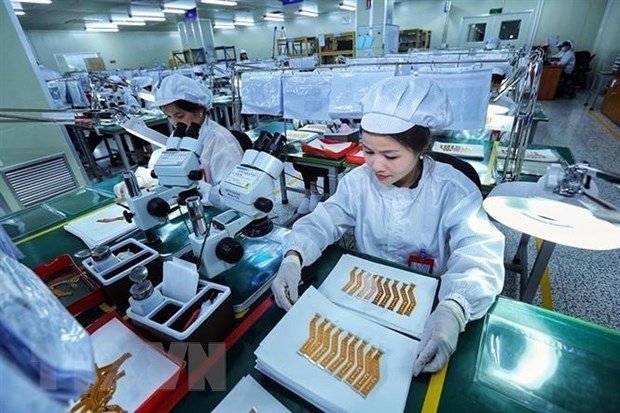 Economy
Economy

Việt Nam has one of the most advanced livestock sectors in ASEAN, and the European Union-Việt Nam Free Trade Agreement (EVFTA) is expected to create new opportunities for the industry.
Nguyễn Xuân Dương, acting director of the Department of Livestock Production under the Ministry of Agriculture and Rural Development, speaks to Vietnam News Agency about what the future holds.
What are the basic goals of the new livestock development strategy?
Prime Minister Nguyễn Xuân Phúc recently approved a development strategy for 2021-2030 with a vision to 2045 for the domestic livestock industry. The strategy includes important policies and solutions for Việt Nam's livestock industry.
The industry will need to reform and develop from 2021-2030 to cope with the challenges posed by the integration process.
The basic goals of this strategy are for the livestock industry to modernise production, develop organic husbandry and produce high quality goods that meet food hygiene and safety standards.
The industry will conduct scientific research and focus on the application of scientific advances and technology through Industry 4.0 to improve competitiveness and production capacity.
This will help Việt Nam to develop one of the most competitive livestock industries in the region as well as Asia, with products that can compete with other countries.
In addition, the industry will develop professional production at farms, enterprises and traditional business households on a large scale.
According to the strategy, the industry must also meet the domestic demand for food while increasing exports. Việt Nam expects to export 25 per cent of its pork products and 15-20 per cent of its poultry products.
Over the years, we have not fully exploited the potential of the livestock industry because there are still too many small-scale business households. That has made it difficult for State agencies to control food safety, especially during times of disease.
The EVFTA came into effect in August 2020. What opportunities and challenges does the agreement offer?
This agreement creates great opportunities for business and production, especially in the cultivation, aquaculture, wood processing and forestry industries.
The livestock industry will face more challenges than opportunities because European countries all have developed livestock industries with more experience in developing production and business. In European countries, livestock production accounts for 60-80 per cent of agricultural production, while cultivation accounts for 20-40 per cent.
They also used advanced technology in production on farms and for slaughtering and processing so the domestic livestock industry is likely to face more pressure.
Therefore we need solutions to remove these challenges. Việt Nam will boost exports of livestock products that Europe has high demand for, and import modern technology.
Under this agreement, Việt Nam will enjoy preferential tariffs for livestock products exported to the EU, so the industry will need to revamp production and improve quality and productivity.
The livestock industry is currently in a development phase, leading to an inbalance between supply and demand. What does the industry need to do to solve this problem?
In 2017 the price of pork fell because farmers increased production, but an outbreak of African swine fever in 2019 caused a shortage in 2020, leading to unusually high pork prices.
The implementation of this development strategy will solve this problem. To balance supply and demand in the domestic livestock market, the industry must organise production linking the important roles of businesses and cooperatives.
In that chain, businesses, commodity associations and cooperatives will organise production for households with small-scale production according to market demand. This chain will create a balance between supply and demand and also reduce intermediaries that push commodity prices up. Without intermediaries, prices will fall.
For example, at present, the price of pork is high due to high intermediate costs so consumers have to pay more while producers struggle to make a profit.
What policies does the industry need to implement the development strategy for 2021-30 with a vision to 2045?
In the next 5-10 years, the strategy has a number of important policy groups. The State needs to complete policies to promote the integration and development of the livestock sector, including a land policy. The industry needs large farms for animal husbandry according to the Law on Livestock Production.
The State must offer credit policies for the industry because livestock production costs are high. For example, a processing factory in the cultivation industry needs investment of about VNĐ500 million, but a slaughterhouse without processing lines like Masan Group in Hà Nam and Long An needs VNĐ1.8 trillion. The company would need even higher investment if it wanted to build a processing plant.
This is why we need suitable credit and tax policies for the livestock industry, especially for slaughtering and processing.
For commercial policies, we need to reorganise the commercial system including wholesale markets and auction markets.
In addition, there must be a reserves policy, especially for essential commodities like pork, to avoid sudden increases in prices. National reserves would ensure a balance between supply and demand. VNS









